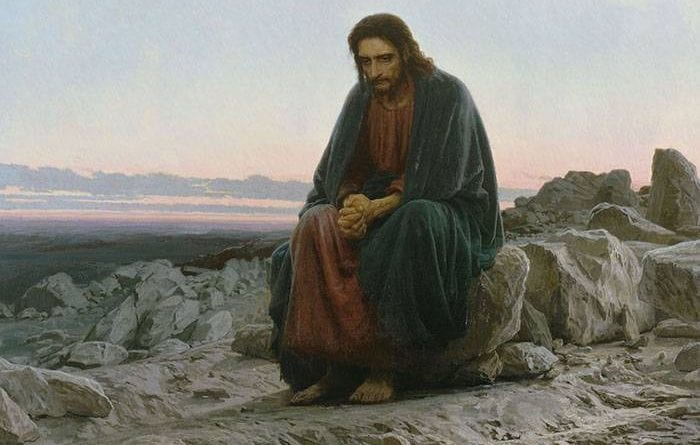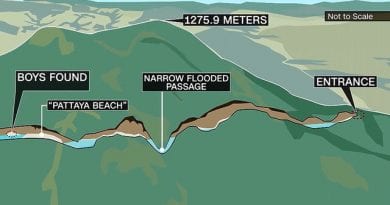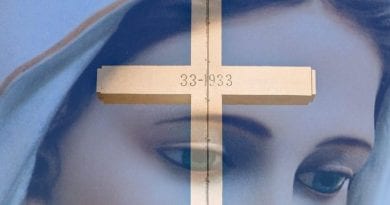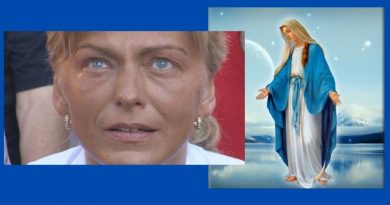The Unusual Story Behind Russia’s Most Famous Painting of Christ – Ivan Kramskoy’s ‘Christ in the Desert’
(Russian art for the seeking soul)
A few months before he was due to graduate with honours from the Imperial Academy of Arts in St. Petersburg, Ivan Kramskoy (1837-1887) organized the notorious ‘Revolt of the 14.”
He led a group of his best friends (who also happened to be the most promising students of the graduating class of 1864) as they marched into the university main office and furiously presented a list of complaints and demands to the administration.
They proudly denounced the unbearable constraints of academic art, it’s strict delineations between high and low art, it’s deadness and impotency.

The administration expelled them on the spot, suggesting to the police authorities that they keep a watch out over the unwieldy bunch.
Nonplused, the ex-students formed a tight-knit, intensely philosophical and energetic, independent artistic society which they called ‘The Wanderers” (Передвижники).
Less then 10 years later, “the Wanderers” brigade set the beat in the thriving cultural and artistic scene of Russia in the late 1800s. (They produced some of the most incredible Russian spiritual paintings. More here)
At an 1872 exhibit in St. Petersburg, Ivan Kramskoy revealed his long-awaited work: “Christ in the Dessert.”
 Christ in the Desert
Christ in the DesertA TRIP INTO THE PAST
It had taken him years work and thought to complete. Before he had even attempted to start painting, he roamed through Germany, France, and Italy, a man on a mission.
He knew needed to see everything that had been done on the topic before.
How had others seen that particular scene of Christ’s life? How had others imagined it, what colours had they used, what feelings had the artists of old communicated?
 Piero della Francesca (c1463)
Piero della Francesca (c1463)In his letters home, Ivan praised the Italian artists, but something about their Christ deeply disturbed him
“He’s divine, but an alien to our time, it’s terrible to say … in my opinion in them he is blasphemed”
“He has the look of an Italian aristocrat ….one with a dry heart, a look that could not belong to a person of all-encompassing love.”
Kramskoy also visited the Crimean peninsula in the southwest of the Russian Empire. It was the closest thing he could get to the climate of Palestine.
He walked the terrain from sunrise to sunset, trying to decode the feelings of someone who was left one-on-one with his reveries in a rocky, bare and mountainous desert.
 the salt deserts of crimea
the salt deserts of crimeaWILL THEY UNDERSTAND?
The painting caused an uproar at the exhibit, sparking discussion, debates, confusion on the spot. Arguments about it continued outside, in the newspapers and magazines.
Vsevolod Garshin, a writer of the time, took it upon himself to resolve the elusive and unresolved sense about the painting.
He wrote an anonymous letter to Kramskoy asking him to settle the debates once and for all.
Is this the morning of the 41st day, when Christ has already decided and is ready to go meet suffering and death? Or is this the moment when ‘the devil came to him’, as my opponents argue?
In the letter, he explores also his own ecstatic understanding of the painting, reading into the painting and offering his own explanation even as he asks for one.
The features that you gave to your creation, in my opinion, do not at all serve to excite pity for the “sufferer”…No, they immediately amazed me as an expression of enormous moral strength, a hatred of evil and a complete determination to fight it.
He (Jesus) is absorbed with what the actions that he must undertake, he searches in his head all that he will say to the despicable and unfortunate people, whom he had left when he went to the desert to think in freedom
Suffering does not concern him now: it is so small, so insignificant in comparison with what is now in his chest, that the thought of it doesn’t come to Jesus’ head.
 Vsevolod Garshin
Vsevolod GarshinGarshin mentions that there were even people who questioned the identity of the hero of the painting. He mocks them for not seeing what to him is absolutely evident.
A certain someone even directly blurted out that your Christ is Hamlet!
Now, if we are looking for literary types to compare him to, he is more like Don Quixote…
But, this comparison is also bad, because your Christ–is Christ.
….
A SPIRITUAL STRUGGLE
Kramskoy replied to Garshin’s plea immediately, in the form of an entire article. It was as though he had just been waiting to be asked.
He never conclusively answered Garshin’s question but described with openness the doubt, fear and sense of urgency that had haunted him in his search for the right form for Christ.
Here are his own words:
“… For each person, imperfect, maybe, but still created in the image and likeness of God, there comes a moment in life, when he falls into contemplation: should he go to the right or to the left? Should he ‘take a ruble’ for the Lord God or not to yield a single step to evil?”
“In the morning, weary, exhausted, suffering, he sits alone among the stones, sad, cold stones; hands convulsively and tightly clenched, legs injured, head bowed down …
He is thinking hard, has remained silent for a long while, so long ago that his lips are baked, his eyes do not notice objects …

His reply relays an unexpected, raw pain and sense of immediacy, as though the painting process became a matter of intense importance to him.
He does not feel anything, it’s a little cold, just so that he seems to be stiff from long and motionless sitting.
And around him, nowhere and nothing rocks even a bit, only on the horizon black clouds are floating from the east … And he is still thinking, thinking, terror begins to take over …
How many times have I cried before this figure!?
Like so many other artists, the closer Kramskoy came to capturing the image he had imagined, the greater the vision loomed. He felt more and more inadequate in his attempt to convey even the shadow of his great ideal.
How does one proceed? As though this is possible to draw! And you ask yourself, and you ask justly: can I draw Christ?
No, I can not, I could not, yet I still drew, and didn’t stop drawing until the painting was inserted it into the frame.
I kept drawing until the others saw it, too – in conclusion, I committed, perhaps, a blasphemy , but I could not NOT draw … “.
 Ivan Kramskoy – self portrait
Ivan Kramskoy – self portraitAs time went on, the search for artistic forms morphed into a search for spiritual truths.
“Christ in the desert” – is my first thing that I worked on seriously, drew with tears and blood …,
it is the result of my deep suffering … the result of many years of searching … “.
He wrote to his friend and student Fyodor Vasilyev (another talented artist).
How afraid I was that they would drag my” Christ “to an international court and all the slobbering monkeys would poke their fingers on Him and drool their criticism … “.
….
When the exhibit was ending, Kramskoy was approached by a famous art collector. The artist named a handsome sum for the time: 6,000 rubles.
The painting was sold on the spot. Today, it can be seen in the most famous art gallery in Moscow, the Tretyakov gallery.
Perhaps it had been hard for Kramskoy to part with that particular painting, but it was part of the philosophy of the Wanderers to sell what they created.
Their dream was for art to populate and change Russian society from the inside.
Indeed, if a painting like “Christ in the Dessert” fails to change us, what will succeed?

Sources:
https://foma.ru/xristos-v-pustyine-luchshaya-kartina.html





